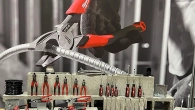
A Comprehensive Guide to Hand Saws and Electric Saws
Whether you’re a seasoned DIY enthusiast or a novice homeowner, a saw is an essential tool in your workshop. From cutting lumber for a new deck to trimming branches in your backyard, there are countless tasks that require a saw. But with so many different types available, it can be overwhelming to choose the right one for your needs. In this comprehensive guide, we’ll explore the world of hand saws and electric saws, helping you understand their key features, benefits, and applications.
Hand Saws: A Classic Tool
Hand saws have been used for centuries and remain a popular choice for many woodworking projects. They are typically constructed with a long. Thin blade that is attached to a handle. The blade is often made of high-carbon steel. Which provides the necessary strength and sharpness for cutting through wood.
Types of Hand Saws
There are several different types of hand saws available, each designed for specific purposes:
- Crosscut Saw: This saw is ideal for cutting across the grain of wood. The blade has a finer tooth pitch, which allows for precise cuts.
- Ripsaw: Used for cutting along the grain of wood, a ripsaw has a coarser tooth pitch that can handle larger pieces of lumber.
- Backsaw: This saw has a stiff back that helps prevent the blade from flexing, making it ideal for fine woodworking tasks.
- Coping Saw: A coping saw has a U-shaped frame that allows for intricate cuts in thin materials.
- Japanese Saw: Known for their sharpness and efficiency, Japanese saws have a thin blade and a unique tooth design.

Advantages of Hand Saws
- Portability: Hand saws are highly portable and can be used in tight spaces where electric saws may not fit.
- Precision: With careful technique, hand saws can provide precise cuts, especially for delicate woodworking projects.
- No Power Required: Hand saws are a great option for outdoor use or in areas where power is not available.
Disadvantages of Hand Saws
- Physical Effort: Using a hand saw requires physical strength and can be tiring for extended periods.
- Slower Cutting: Compared to electric saws, hand saws are generally slower and less efficient.
- Safety Concerns: Improper use of a hand saw can lead to injuries, such as cuts or splinters.
Electric Saws: Power and Efficiency
Electric saws offer a powerful and efficient alternative to hand saws. They are powered by electricity and come in a variety of styles and sizes to suit different needs.

Types of Electric Saws
- Circular Saw: This saw has a circular blade that spins at high speed, making it ideal for cutting through thick pieces of wood.
- Reciprocating Saw: Also known as a saber saw, this saw has a reciprocating blade that moves back and forth, making it suitable for cutting curves and irregular shapes.
- Jigsaw: Similar to a reciprocating saw. A jigsaw has a reciprocating blade but is designed for finer cuts in thin materials.
- Table Saw: A table saw has a circular blade mounted on a table, allowing for precise cuts and various woodworking tasks.
- Miter Saw: This saw is designed for making angled cuts. Such as those needed for framing or trim work.
Advantages of Electric Saws
- Power and Efficiency: Electric saws can quickly and easily cut through thick pieces of wood, saving time and effort.
- Versatility: With different types of blades. Electric saws can be used for a wide range of applications.
- Safety Features: Many electric saws are equipped with safety features. Such as blade guards and anti-kickback mechanisms.
Disadvantages of Electric Saws
- Cord Restrictions: Corded electric saws are limited by the length of their power cord.
- Noise and Vibration: Electric saws can be noisy and can generate vibrations that may be uncomfortable for extended use.
- Maintenance: Electric saws require regular maintenance, such as blade sharpening and cleaning.

Choosing the Right Saw for Your Needs
When selecting a saw, consider the following factors:
- Project Requirements: What types of cuts will you be making? How thick is the material you’ll be working with?
- Frequency of Use: How often will you be using the saw? A hand saw may be sufficient for occasional use. While an electric saw is better suited for frequent or heavy-duty tasks.
- Budget: Determine how much you’re willing to spend on a saw. Hand saws are generally more affordable than electric saws.
- Safety Considerations: Consider your experience level and safety concerns when choosing a saw.
DIY home improvement projects
DIY home improvement projects can be a rewarding and cost-effective way to transform your living space. Whether you’re looking to increase your home’s value, improve its functionality, or simply add a personal touch, there’s a DIY project for everyone.
Beginner-Friendly Projects
- Painting: A fresh coat of paint can instantly brighten up any room. Choose colors that complement your existing décor or create a bold new look.
- Wallpapering: Wallpaper can add texture, pattern, and a touch of personality to your walls. Start with a small room or accent wall for a less daunting project.
- Shelving: Install shelves to provide additional storage space and display your favorite items. Choose from a variety of materials, such as wood, metal, or acrylic.
- Backsplash: Upgrade your kitchen with a new backsplash. There are many options available, including tile, glass, and stainless steel.
Intermediate-Level Projects
- Cabinet Refinishing: Give your kitchen or bathroom cabinets a new lease on life by refinishing them. You can sand, paint, or stain them to match your desired style.
- Flooring: Replace your old flooring with new hardwood, laminate, or vinyl. This project can significantly improve the look and feel of your home.
- Lighting: Update your lighting fixtures to create a more modern or stylish atmosphere. Consider replacing outdated fixtures with new chandeliers, pendant lights, or sconces.
- Plumbing Fixtures: Upgrade your bathroom or kitchen with new faucets, sinks, or toilets. This can be a relatively simple project that can make a big impact.
Advanced-Level Projects
- Kitchen Remodel: A kitchen remodel can be a major undertaking, but it can also dramatically increase the value of your home. Consider updating your cabinets, countertops, appliances, and flooring.
- Bathroom Remodel: A bathroom remodel can create a spa-like retreat in your home. Update your fixtures, tile, and layout to create a luxurious space.
- Adding a Room: If you have the space, consider adding a new room to your home. This could be a bedroom, home office, or family room.
- Outdoor Living Space: Create a beautiful outdoor living space by building a deck, patio, or pergola. Add comfortable seating, landscaping, and lighting to make it a relaxing retreat.
Tips for Successful DIY Projects
- Plan Ahead: Before starting a project, create a detailed plan, including materials, tools, and a timeline.
- Set a Budget: Determine how much you can afford to spend on the project and stick to your budget.
- Gather the Necessary Tools: Make sure you have all the tools you need before starting the project.
- Safety First: Always prioritize safety when working on DIY projects. Wear appropriate safety gear and follow all instructions carefully.
- Don’t Be Afraid to Ask for Help: If you’re unsure about a particular step, don’t hesitate to ask for help from a friend, family member, or professional.
DIY home improvement projects can be a rewarding way to transform your living space. With a little planning, patience, and creativity, you can achieve your desired results and create a home you love.
Safety Tips for Saw Use
- Read the Manual: Always read the user manual carefully before using any saw.
- Wear Protective Gear: Wear safety glasses, hearing protection, and gloves when using a saw.
- Secure Your Workpiece: Ensure your workpiece is securely clamped or held in place to prevent accidents.
- Keep Blades Sharp: A sharp blade is less likely to bind or cause kickback.
- Avoid Force: Don’t apply excessive force when cutting. Let the saw do the work.
Other creative and practical uses of electric hand saws
Electric hand saws, such as reciprocating saws and jigsaws. Are versatile tools that can be used for a wide range of tasks beyond traditional woodworking. Here are some creative and practical applications:
Home Improvement and Remodeling
- Demolition: Reciprocating saws are excellent for cutting through drywall, wood framing, and other materials during demolition projects.
- Plumbing and Electrical Work: These saws can be used to cut pipes. Conduit, and electrical cables. Making them invaluable for plumbing and electrical repairs.
- Tile Cutting: Jigsaws with a carbide-tipped blade can be used to cut tiles precisely for bathroom and kitchen renovations.
- Furniture Assembly: Reciprocating saws can be used to cut dowels and other fittings to size for furniture assembly.
Outdoor Projects
- Tree Trimming: Reciprocating saws with a long blade can be used to cut branches and limbs. Making tree maintenance easier.
- Gardening: Helping to control unwanted growth in gardens.
DIY Crafts and Projects
- Metal Cutting: Some reciprocating saws have blades designed for cutting metal, making them useful for various DIY projects involving metalwork.
Industrial Applications
- Automotive Repair: Such as rusted bolts and pipes.
- Construction: Including cutting through metal studs, concrete, and other materials.
- Manufacturing: Such as plastics, composites, and metals.
Remember to always follow safety guidelines when using electric hand saws. With a little creativity and the right blade. Both around the home and in professional settings.
Whether you choose a hand saw or an electric saw, it’s important to select the right tool for your specific needs. By understanding the features, benefits, and limitations of each type, you can make an informed decision and enjoy your woodworking projects safely and efficiently.












Leave a Reply